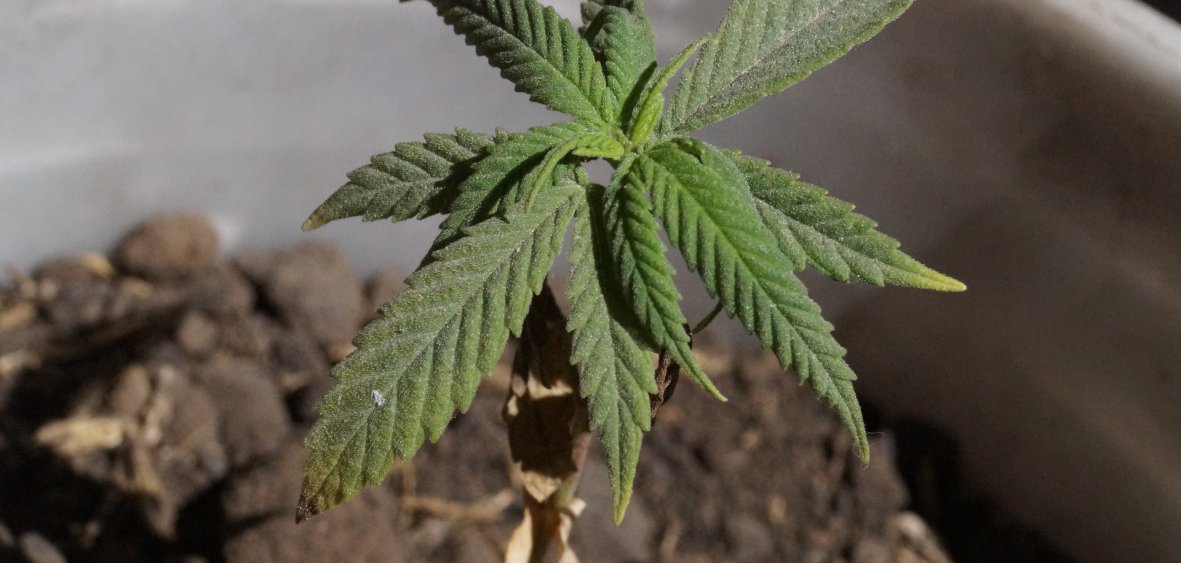Cannabinoids show anticancer activity on animal models
Research conducted in the last 15-20 years in various laboratories has shown that cannabis derivatives (specifically, the main active substance of plants, delta-9-tetrahydrocannabinol or THC) show anticancer activity on animal models with cancer. Studies have strongly confirmed that the use of cannabinoids in these models can reduce the growth of brain tumors (gliomas), breasts, pancreas, skin (melanoma and skin cancer), liver, prostate gland, etc. The use of cannabinoids in these models can reduce the growth of tumors of the brain (gliomas), breast, pancreas, skin (melanoma and skin cancer), liver, prostate, etc.
Most of these studies have helped us to understand the mechanisms that cannabinoids use to produce anticancer effects. THC, the main active substance of the plant, shows its anticancer properties in the body by acting on the endocannabinoid system. This system consists of 'endocannabinoids', lipid (water-soluble) molecules that are produced by the cells of our body and cannabinoid receptors (CB1 and CB2, present on the surface of numerous cells of different organs and tissues, these proteins are present in large quantities in certain areas of the brain). The combination of endocannabinoids with CB1 and CB2 receptors helps regulate numerous physiological processes such as appetite, movement and pain. THC is capable of binding and activating cannabinoid receptors, thus imitating the effects of endocannabinoids in the body.
In the case of anticancer action of cannabinoids, we now know that they are also largely related to the ability to activate CB1 and CB2 receptors present in cancer cells, which leads to a series of processes within these cells and, consequently, to programmed death (or "apoptosis" - a regulated cell death). Recent research indicates that THC activates apoptosis in cancer cells by means of a complex signal pathway that leads to stimulation of another cellular process.
autophagy (literally, loneliness). Research has also shown that, in addition to promoting cancer cell death, cannabinoids can contribute to inhibiting tumor growth by inhibiting cancer angiogenesis (the process by which cancer modifies blood vessels in such a way that it is easier to obtain the nutrients and oxygen necessary for growth and development). Cannabinoids also inhibit the ability of cancer cells to migrate and invade other tissues.
Previous studies have shown that THC is a phytocannabinoid (cannabinoid of plant origin) with the strongest anti-cancer effect. Research conducted by independent laboratories has also shown that cannabidiol (CBD), another ingredient of Cannabis sativa, can reduce tumor growth in animal models, although in most cases the effect is weaker than THC. The exact mechanism by which CBD (which is not effectively associated with cannabinoid receptors) shows its anticancer action has not yet been clearly identified, although it is known that it also depends on the ability of the compound to trigger the apoptosis mechanism in cancer cells. Research has also shown that the combination of THC and CBD in the 1:1 ratio can reduce the dose of THC required to achieve cancer control in animal models with a brain tumor called glioma. It should be noted that the possible anticancer activity of other compounds produced by Cannabis sativa, including phytocannabinoids other than THC and CBD or some terpenes, as well as the presence of an 'accompanying effect' or a strengthening effect resulting from the combination of some compounds present in the plant, is currently not scientifically proven (in both cellular and animal models). Therefore, these properties remain a potentially attractive topic for research, especially in the context of cannabinoid anticancer activity.
A particularly important issue worth considering is the fact that cannabinoids in cancer cells act selectively. Thus, treatment with these compounds does not lead to the activation of apoptosis in cells other than cancer. The exact mechanisms of the described difference in the effect of cannabinoids on neoplastic and non neoplastic cells are not known. However, this observation is important because it helps to explain the low toxicity of cannabinoids compared to other cancer drugs.
Combination of cannabinoids and other cancer control agents
Animal studies have shown that cannabinoids increase the anticancer effect of chemotherapy. For example, the combination of THC or THC and CBD with temozolomide (a drug typically used to treat brain cancer) showed a stronger therapeutic effect in animal models with gliomas than that observed after the same drugs were administered when administered separately. These observations suggest that cannabinoids can be tested to supplement the chemotherapeutic drugs used to treat cancer. In any case, given the significant differences in the characteristics and sensitivity to different therapies between each cancer type and subtype and a significant number of possible drug combinations, we need to continue with this type of pre-clinical study to determine which cases (tumour types and subtypes, combinations of different compounds) would potentially be more appropriate for the inclusion of cannabinoids in cancer treatment.
Why is it necessary to conduct clinical trials?
Although preliminary pre-clinical studies are very promising and suggest that cannabinoids may be useful in the treatment of certain types of cancer, there is still a long way to go to use cannabinoids to treat brain cancer or other types of cancer. It is important to remember that many cancer drugs that showed promising results in animal models were not effective (or at least not more effective than those already in use) in human studies. Therefore, clinical trials are essential to determine whether cannabinoids are useful in treating cancer (or at least certain types of cancer), as they are the only means by which the efficacy of these compounds can be demonstrated and thus accepted by the international medical and scientific community.
The difference between the results of clinical trials and anecdotal or individual observations should be noted. There are many cases of patients who have been found to have significantly improved or even cured cancer after the use of medical cannabis. Without denying the possibility that in some or many cases the healing was caused by cannabinoids, other circumstances (e.g. different simultaneous treatments, dietary changes and interactions with other diseases) may have occurred that may have been responsible for the change experienced by the patient. These individual cases cannot be used as conclusive evidence of the anticancer efficacy of cannabinoids in humans, although they may be used as an argument to justify the implementation of clinical trials that will confirm these conjectures.
Actions for the implementation of clinical trials in humans
At present, a very limited number of clinical trials are being conducted in which the influence of cannabinoids as anticancer agents is analysed. Approximately 10 years ago, initial phase I pilot clinical trials (phase I trials are mainly aimed at investigating potential toxicity associated with new pharmacological treatments) were conducted to analyse the effects of THC administration on patients with multiform gliomas (the most aggressive type of brain tumour) with relapse of primary tumour. Pilot studies have produced encouraging data indicating that THC does not cause toxic effects in patients. At the same time, they suggest that the compound is capable of acting against cancer cells.
In any case, in view of the type of pilot studies and the small number of patients who have been treated, it is not possible to draw conclusions on the survival of patients, although they were the basis for the implementation of future studies. For example, clinical trials have recently been completed that analysed the combined effects of Sativex (a drug containing THC and CBD in the same proportions) and Temozolomide in patients with recurrent multiform gliomas, the results of which will be published in the near future. Similarly, in the case of studies that have just been completed or are planned to be launched in the coming months. These studies analyse or will analyse the effects of different cannabinoids (individually or in combination with other drugs) on brain tumours or solid tumours.
The results of these studies (and those of other studies that may be published in the coming years) provide important information about the cancer activity of cannabinoids in humans and the reasons why these compounds may be more or less effective in treating certain types of cancer or cancer subtypes. This information will be crucial to further research and to determine, in the medium and long term, whether cannabinoids can be included as a permanent part of cancer treatment for at least some types or subtypes of cancer.
Current situation
Given the above, it is certain that in the absence of clinical trial results (it will take years to provide conclusive data from these trials), there is currently insufficient scientific evidence to definitively confirm that treatment with cannabinoids can help improve the existing therapies among patients with brain tumours or other types of cancer. Therefore, the administration of cannabinoid drugs or medicinal marijuana as part of the standard treatment for these diseases is currently not authorised (or subsidised).
In any case, taking into account reliable evidence of cannabinoid cancer activity in animal models, the fact that cannabinoid drugs have demonstrated their usefulness in mitigating the adverse effects of other cancer drugs and that the adverse effects of cannabinoids are mild compared to other chemotherapeutic agents, many patients ask whether the use of cannabinoids can be helpful in treating their disease, especially when other therapeutic options fail.
Patients who are interested in the use of cannabinoids as part of cancer treatment are advised to consult doctors who are experienced in the therapeutic use of cannabinoids and who can contact patient associations interested in the therapeutic use of cannabis derivatives. These doctors may recommend the use of cannabinoid drugs (which may be prescribed, for example, for the treatment of sympathy). Theoretically, it is also possible to use cannabis extracts or oils of controlled origin that contain known concentrations of THC and CBD, allowing the doctor and the patient to determine the amount of active substance that the patient is taking. In any case, the use of these types of extracts containing THC is not legal in Spain and other European countries. The administration of cannabis oils or extracts of uncontrolled origin (in which the amount of THC and CBD is unknown, as well as the possible presence of contaminants (e.g. pesticides, herbicides, heavy metals and organic compounds from the extraction process)) may pose a risk to the patient. Similarly, the replacement of conventional therapy by other therapies based solely on the use of cannabinoids is not justified from the point of view of fundamental and pre-clinical research and deprives the patient of the possibility to benefit from therapies that have already demonstrated at least a certain level of efficacy. Therefore, in those cases where it is decided to start cannabinoids in cancer patients, the most logical starting point is to maintain the therapy to which each patient has been subjected during the treatment of their disease and to gradually add (always after consultation with an oncologist or at least a physician with knowledge of the subject) an appropriate amount of cannabinoids.
Summary/ Conclusions
In conclusion, there is currently good evidence to suggest that cannabinoids (especially THC and to a lesser extent CBD) show anticancer activity in animal models. However, until we obtain data from clinical trials, we cannot establish whether this cancer activity can be useful in treating cancer in humans. Taking into account the experience gained with the clinical use of cannabinoids in the treatment of other diseases, their low toxicity compared to other cancer medicines and their usefulness as medicines that can alleviate cancer symptoms and adverse effects of cancer therapies, an increasing number of patients, due to the urgency of the situation, are considering the possibility of including these agents in their treatment without waiting for the results of clinical trials. In these cases, and pending a clear position on the use of medicinal cannabis, the main recommendations to the patient regarding risk prevention are as follows: Whenever possible, consult a physician with experience in the therapeutic use of cannabinoids (in some cases, may help to establish such contact with patient associations interested in the use of cannabis in medicine) and in the implementation of treatment (on a complementary therapy basis, In the latter case, it should be stressed that extracts that contain THC are not legal in Spain and other European countries, so that the patient can take the most appropriate dosage of these compounds. Still it's worth mentioning that high quality full spectrum CBD Oils are widely available in almost all European countries. Full Spectrum oils contain not only CBD but also other cannabinoids including THC (in very small amounts), CBC, CBV and others, making it far more effective than isolated CBD.















